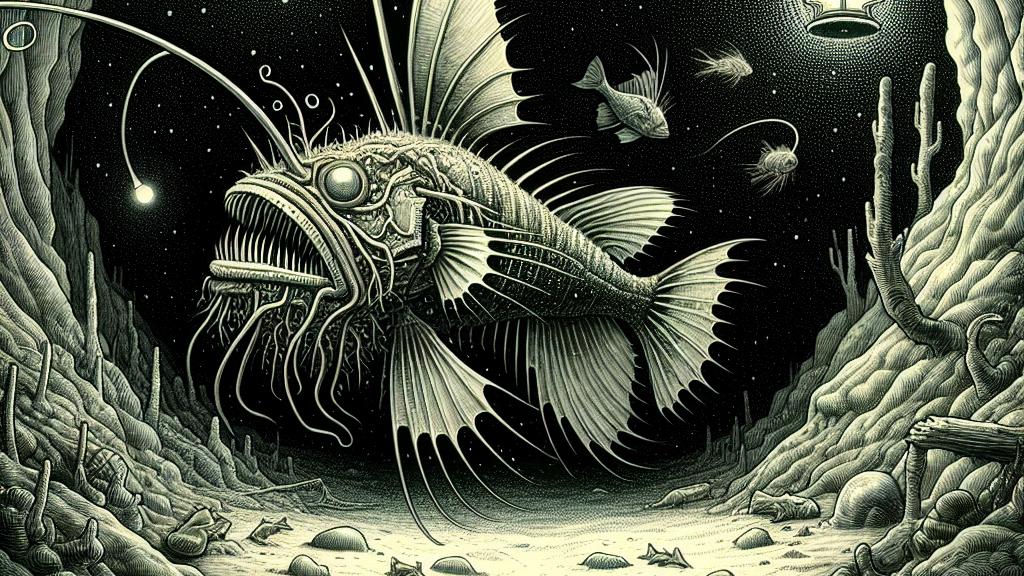Exploring the Evolutionary Adaptations of Anglerfish in the Deep Sea
Overview
- Anglerfish thrive in the mysterious depths of the bathypelagic zone, showcasing extraordinary adaptations.
- Their bioluminescent lures and varied body shapes are not just fascinating; they tell a compelling story of survival.
- Recent studies unravel the rich tapestry of evolutionary diversity, even in nature's harshest environments.

Survival in the Depths: A Dark World
Picture a realm where sunlight fades away, and darkness reigns supreme. This is the life of anglerfish, residing in the bathypelagic zone, stretching from 3,300 to 13,000 feet beneath the ocean's surface. Here, the conditions are extreme, with crushing pressures and a scarcity of food. Yet, these remarkable fish possess adaptations that allow them to thrive in this foreboding environment. For example, their bioluminescent lures dangle from their heads, emitting an eerie glow that attracts curious prey, much like a moth drawn to a flame. This captivating adaptation serves dual purposes: to ensnare unsuspecting victims and to mesmerize potential mates in an intricate display of underwater allure. Thus, the anglerfish, with its glowing appendage, has mastered the art of survival in a world defined by darkness.
An Evolutionary Odyssey: From Sea Floor to the Abyss
Recent research from Rice University has taken a deep dive into the evolutionary history of anglerfish, unveiling a narrative as complex as the depths they inhabit. Surprisingly, modern deep-sea anglerfish emerged from ancestors that once roamed the seafloor. As they ventured into the open ocean, they underwent remarkable transformations. Take, for example, the ceratioids—these deep-sea anglerfish developed larger jaws and unique body shapes that allow for efficient hunting in resource-limited waters. Their evolutionary path is not just about survival; it's a vivid testament to adaptability and innovation. A striking illustration is the varied body forms found among ceratioids; while some showcase a classic bulbous appearance, others adopt elongated structures, such as the ‘wolftrap’ phenotype, designed like a trap for snapping up prey. This fusion of form and function is a powerful reminder of how life can flourish in even the most unwelcoming habitats.
Diverse Outcomes: Innovation in Adversity
One of the most astonishing discoveries from this research is the high degree of phenotypic diversity among deep-sea anglerfish, especially when compared to coastal species. While we might think that vibrant ecosystems, like coral reefs, would promote greater diversity, the findings reveal a different story. In the harsh, resource-poor environment of the deep sea, anglerfish exhibit an astonishing array of characteristics and adaptations that allow them to survive where others might falter. Their adaptations include features like expansive mouths tailored for gulping down prey and specialized structures that enhance their hunting efficiency. This variability illustrates a crucial point: adversity can often spark creativity and innovation in the evolutionary process. The story of anglerfish serves not just as a biological curiosity but as a remarkable example of how life can adapt, thrive, and even flourish amidst the challenges of the deep ocean.

Loading...